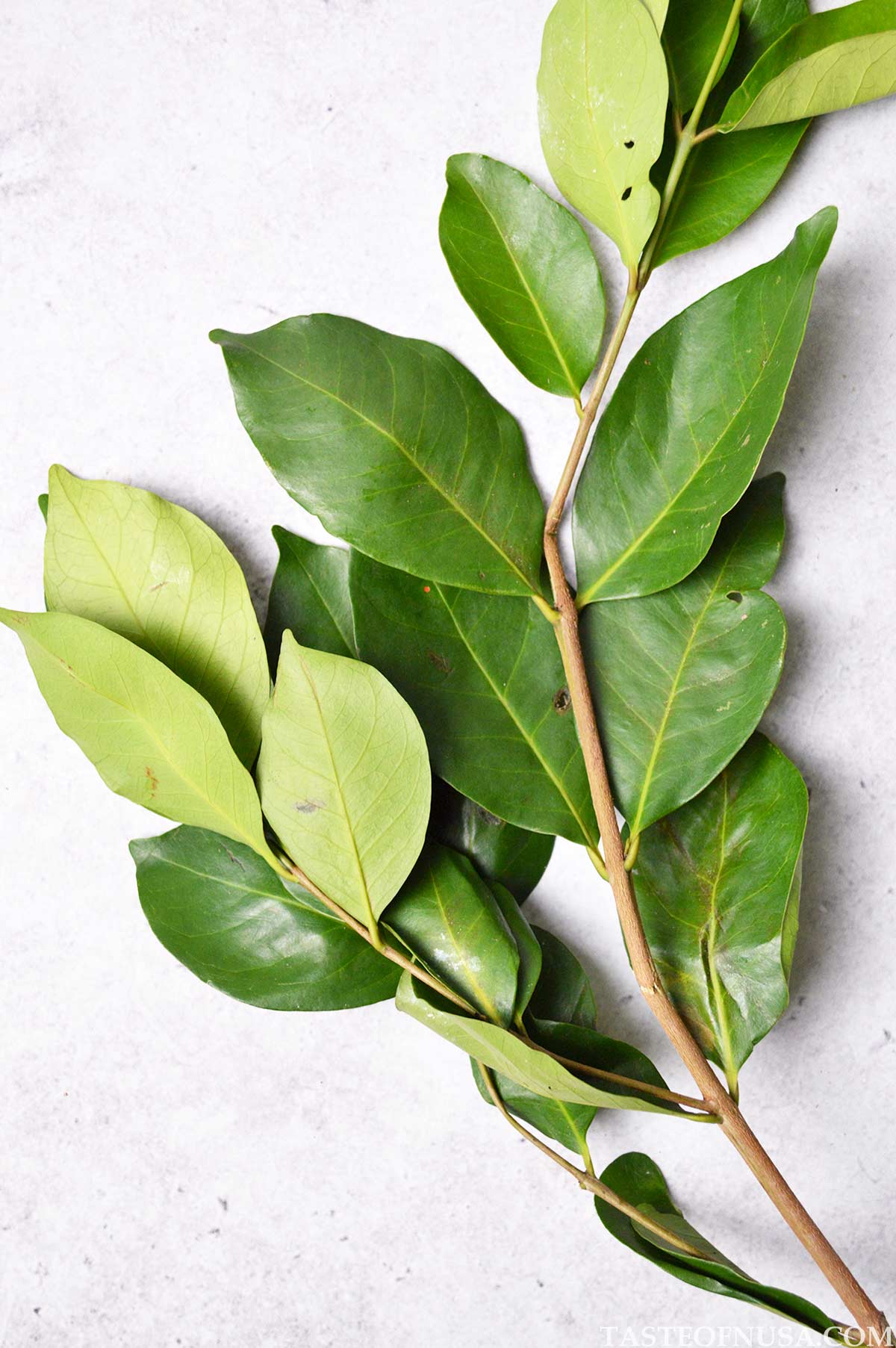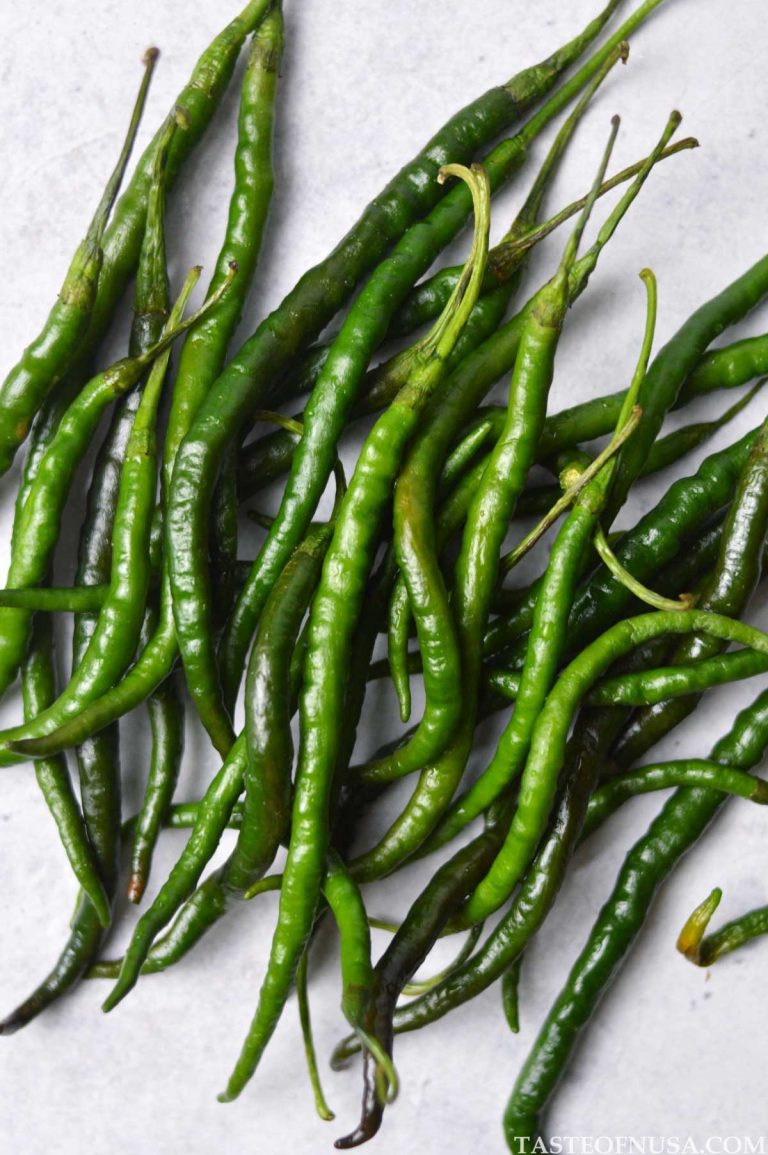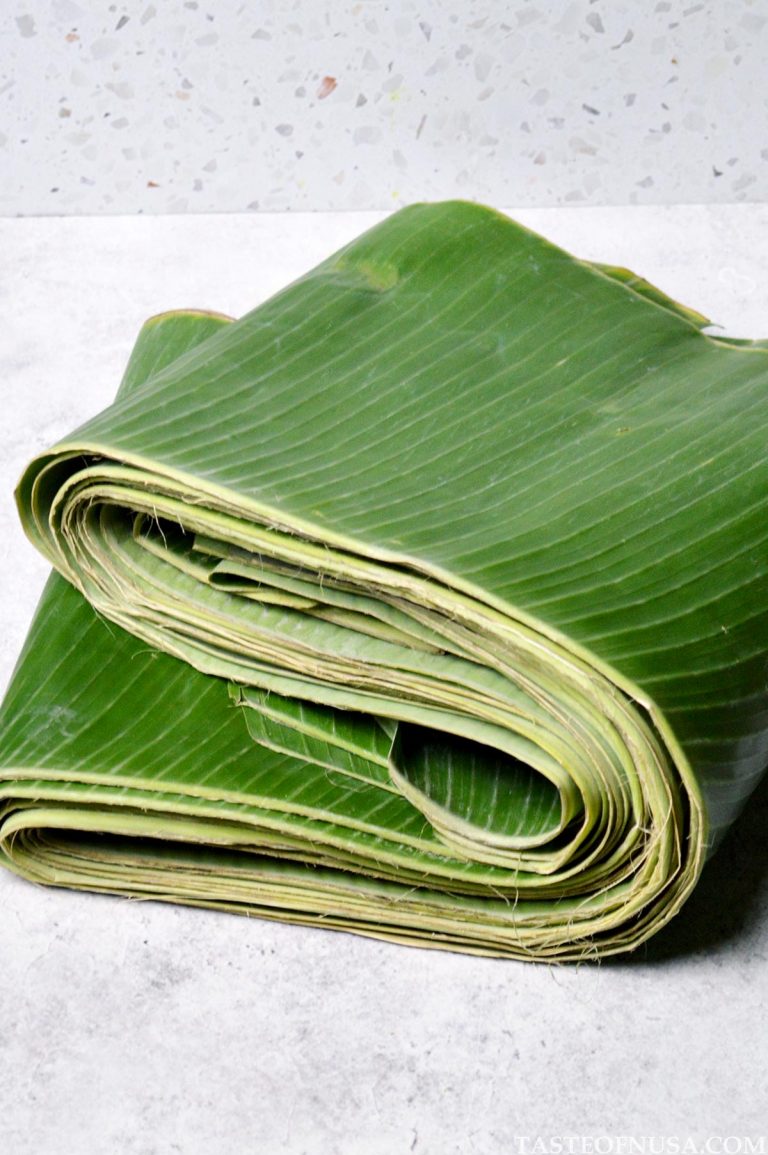Salam Leaves
Salam leaves or also referred to as Indonesian bay leaves add an authentic flavor to many Indonesian dishes. Flavors are released during the long cooking time often required for stews and other simmered dishes.

Other Names
- Syzygium plyanthum (scientific name)
- Indonesian bay leaves
- Indonesian laurel
In some recipes, salam leaves are called ‘Indian bay leaves’. This name stems from the time when Indonesia was generally known as East India. Salam leaves are totally different from the Indian bay leaves that are frequently mentioned in Indian cuisine.
What are Salam Leaves?
Salam leaves are the cousin to bay leaves. The plant is native to Indonesia, Indochina, and Malaysia. They are aromatic leaves commonly used in cooking. They can be used whole or in a dried form.
What Do Salam Leaves Taste Like?
Since salam leaves are not eaten, the flavor is more about what they bring to a recipe. They add a subtle yet unmistakably sweet and savory flavor with slightly sour and earthy flavors. They do not add overwhelming and distinct flavors to the dish. However, they can be thought of as a “supporting herb,” in that they help bring out other flavors and spices in whatever dish you are making.
Substitution
Some thought that salam leaves are the same as bay leaves, but they are actually not. They have a different flavor and cannot be used as a substitute. It is better to not use them if you cannot find any, rather than using bay leaves in the cooking, as the taste will be totally different.
Where to Buy
Salam leaves are widely used in Indonesian cooking. Thus, fresh and dried salam leaves are available at wet markets and supermarkets all throughout Indonesia.
In the United States, salam leaves can be quite difficult to find. You can find dried salam leaves at Chinese, Indonesian, and Southeast Asian grocery stores in small plastic bags clearly marked ‘daun salam‘ or Indian bay leaves.’ They can also be ordered online.
Storage
Store in a plastic bag in the refrigerator for up to one week. If you need to store them for a longer time, freeze the leaves for up to a year. Clean and dry the leaves thoroughly before placing them in a freezer-safe plastic storage bag. Make sure to keep the bag sealed once in the deep freezer to prevent frostbite.
For dried salam leaves, store them in a sealed container in the freezer, which will help the leaves retain their flavor and floral potency. Do not store them in the spice drawer because they will quickly lose their potency.
How to Use Salam Leaves
Fresh and dried leaves are used interchangeably in Indonesian kitchens. When fresh, the leaves are dark green and about three to four inches long. When dry, they are brittle, crinkly, and a dusty, pale green color.
The leaves do not smell like anything. You need to cook them to release their aroma and flavor. The whole leaves are usually added to slow-cooked recipes, such as soups, sauces, and stews, and are removed before serving the dish.






